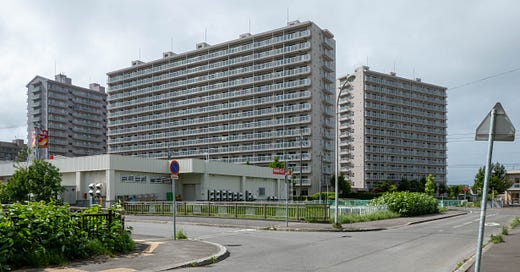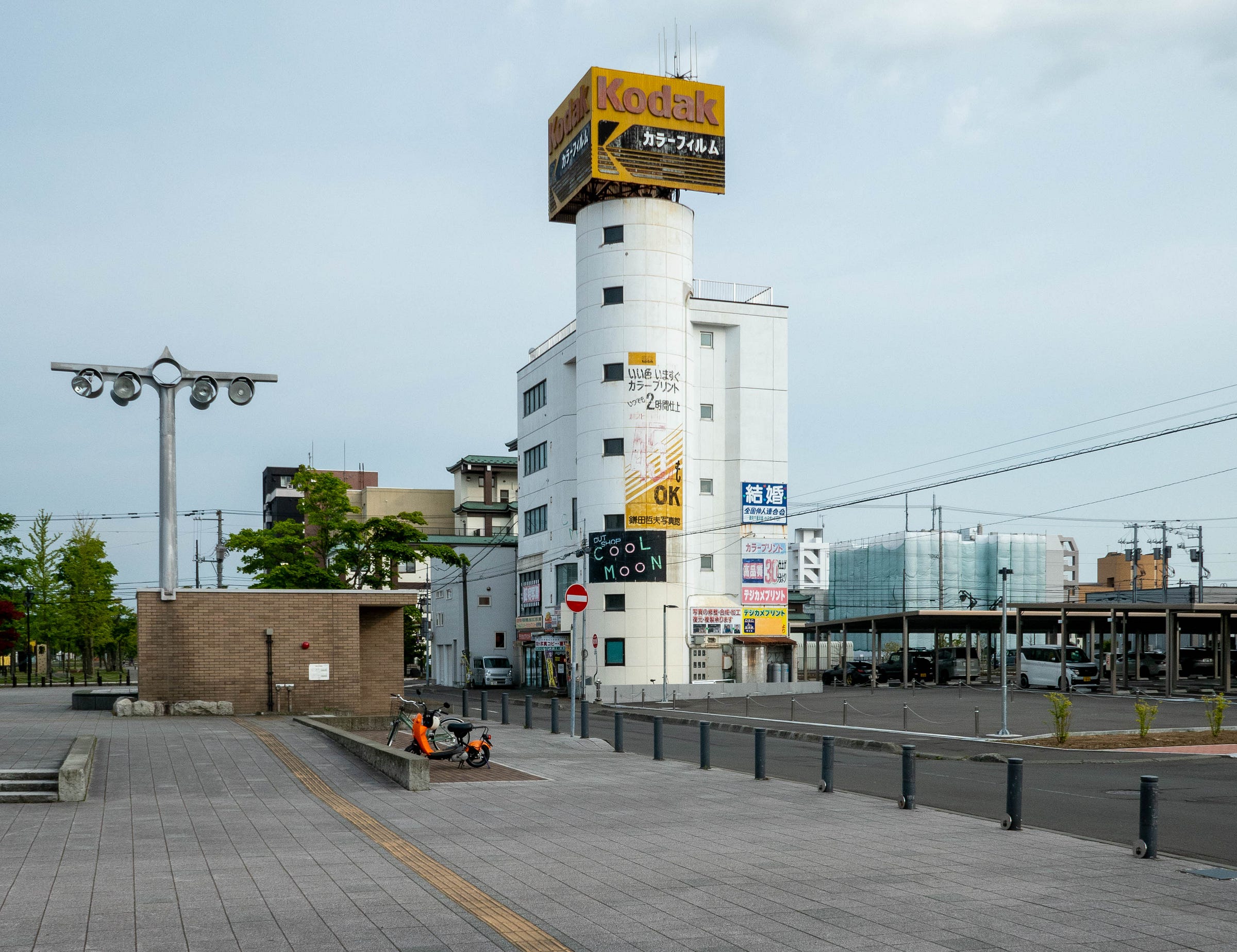(This is my fourth long walk in Japan. The prior eight posts from those trips: From Tokyo to Takasaki, A retreat to Niigata, A pointless little Japan story, From Akashina to Fuji, Walking Fuji, Playgrounds and manhole covers, From Fukuoka to Nagasaki, Burnout in Japan)
Japanese cities are not pretty, and Sapporo might be the ugliest. Like the majority of urban Japan, it is a seemingly never-ending landscape of boxy, reinforced concrete buildings, clad in bathroom-like tiles, often topped off with a forest of industrial-grade antennas or additional boxy things, such as AC units or large cube billboards, with roads dense with a thicket of signs, ads, and banners.
It is an urban utilitarianism that sees any curves (arches, domes, rotundas) and other aesthetic flourishes, other than garish, lurid, and clamorous advertisements, as needless embellishments that get in the way of providing the most people with the least costly city life. It’s part of a wider philosophy that views real estate as an asset to be consumed then discarded, rather than a lifelong investment that pays for your retirement. While that might not make for the most pleasing photos, it does work, for reasons I will explain below.
Sapporo hypercharges this monotonous rectilinearity with a grid layout, thanks to the Hokkaido Development Commission (1869), which was determined to build as quickly as possible to stave off what they saw as a threatening Russia. In the fashion of the times they went with an American inspired rigid pattern of wide streets1, because Japan was in one of its many “modernize now” burst, and a top down uniformity was the cutting-edge thing to do.
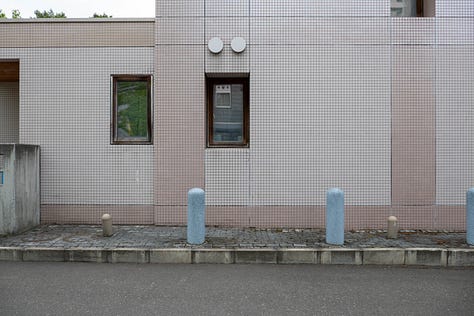
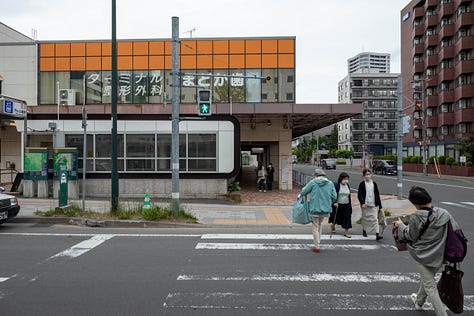
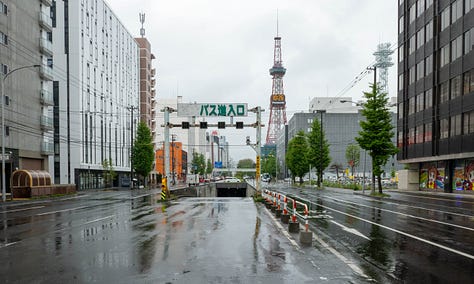
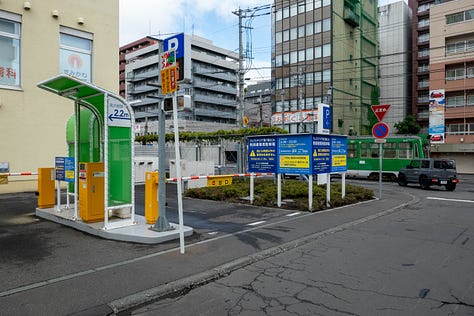
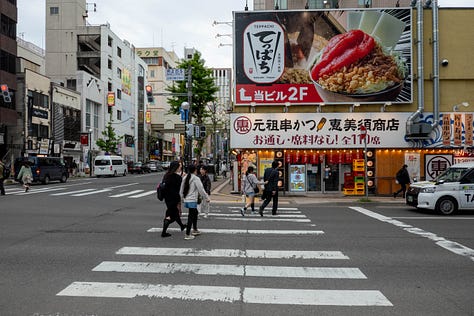
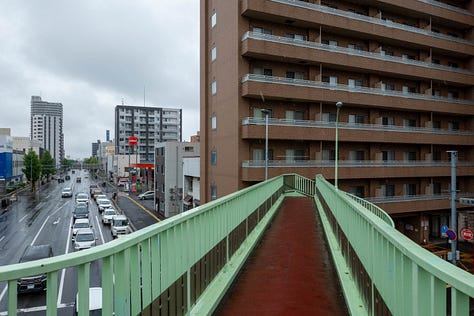
That is my only criticism of Sapporo, and most of Japan, which I love more than almost any other country, and so it is no accident that this is my fourth trip here.
I am highlighting the ugliness not to pick nits, but because it's important to distinguish and disentangle what makes Japan work. Immense physical beauty, while nice, isn't a requirement for a functional and uplifting city.
Japanese cities are enchanting not because of the architecture, or the design, but despite them, because those are dreary. Rather, they're clean, safe, and because, as I and many others have written about, the Japanese, almost to a person, have a shared vision of the public good, and that is a requirement for a city to work, because they are by their very nature communal.
People can't view themselves, as we primarily do in the West, as individual actors in their own drama, rather than members of a cast. If they do, almost no amount of policy tinkering can fix what's broken, because you can't design a communal system without being able to assume some shared behavior2, some implicit trust in the public, and so urban policy becomes the proverbial rearranging chairs on a sinking ship.
The only policy that can reform this type of chaotic low-trust citizenry is extreme state policing, which few people want or desire.
A prime example of Japan's culture of respect and high trust, and how it completely reshapes society, is seeing children here as young as six walk home from school, without adults. No matter how many times I witness it, how much I respect it, as an American it's still hard to get used to, despite having grown up in a similar fashion3.

